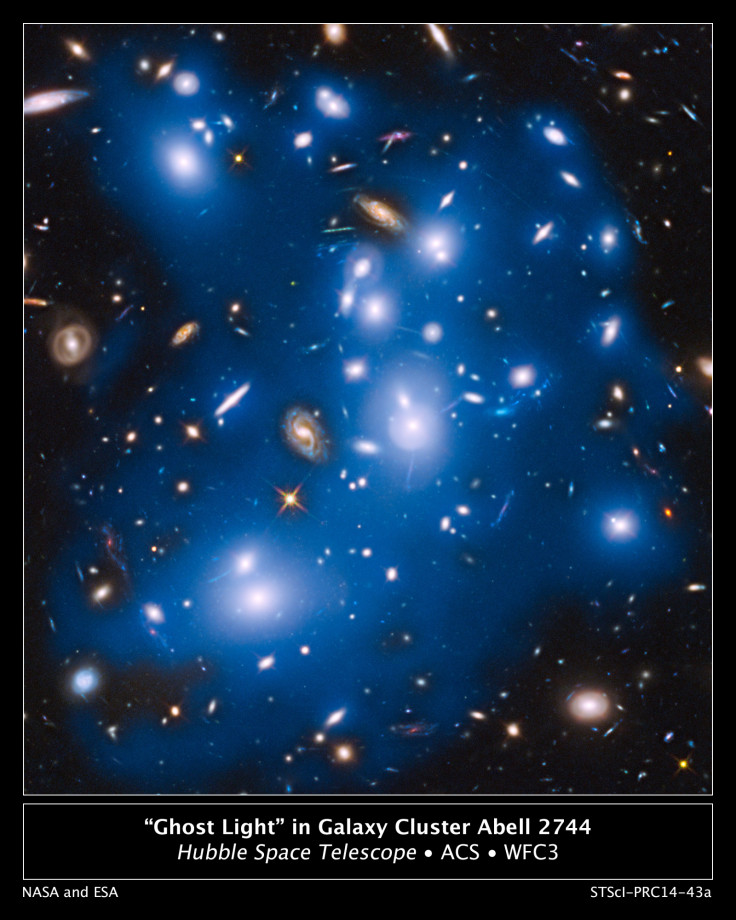Hubble Detects Ghost Light from Galaxies Torn Apart Six Billion Years Ago

Talk of viewing history live cannot be as eerie as seeing remnants of galaxies torn apart billions of years ago. That is what Nasa's Hubble Space Telescope has done by picking up the faint, ghostly glow of long-dead stars ejected from ancient galaxies.
The galactic 'mayhem' happened four billion light-years away, inside an immense collection of nearly 500 galaxies with the mass of four trillion suns and nicknamed 'Pandora's Cluster,' or Abell 2744, says Hubblesite.
The orphaned stars plucked out in the process are no longer bound to any one galaxy, and drift freely between galaxies in the cluster.
Hubble's forensic evidence suggests as many as six galaxies, as big as our Milky Way, were torn to pieces inside the cluster over a stretch of six billion years.
The light from such stars is too faint to be detected, making Hubble's discovery significant. Hubble measurements of the infrared region made it possible to detect the stars.
The team estimates that the combined light of about 200 billion outcast stars contributes approximately 10% of the cluster's brightness.
The phantom stars are rich in heavier elements like oxygen, carbon, and nitrogen indicating they are second- or third-generation stars enriched with stuff created by their predecessors.
The Frontier Fields programme teams Hubble and Nasa's other Great Observatories to look at select massive galaxy clusters to help astronomers probe the remote universe.
Using the massive galaxy clusters that act as gravitational lens, astronomers are able to peer beyond them at distant worlds.
There are five other Frontier Fields clusters in the programme, and the team plans to look for the eerie "ghost light" in these clusters, too.
© Copyright IBTimes 2025. All rights reserved.





















